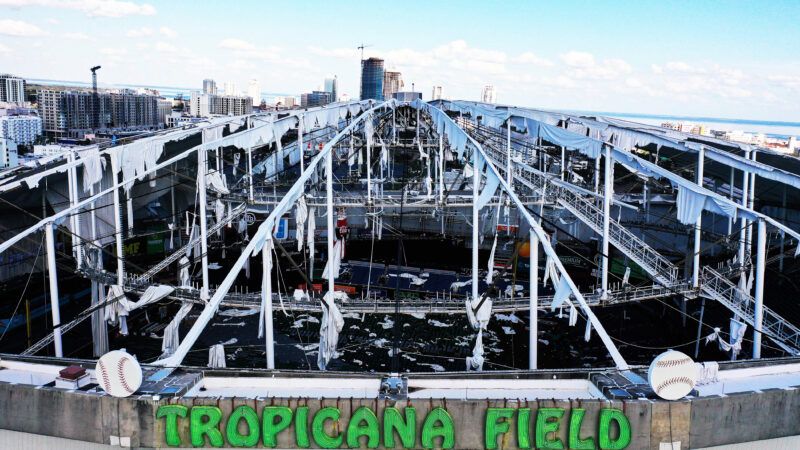Tampa Bay Rays Cancel New Stadium Plans After Local Government Stalls Funding
If funding were approved, St. Petersburg residents would have been on the hook for a new stadium for one of baseball’s least attended teams.

Pinellas County, Florida, and the St. Petersburg City Council recently voted to delay approving the sale of bonds to fund a new stadium for the Tampa Bay Rays, according to Fox 13. Had the funds been released, county and city taxpayers would have been on the hook for millions of dollars to house one of the least attended teams in the MLB.
In July, the city and county approved a $1.3 billion plan to build a new stadium for the team. The stadium, which would be a part of a larger $6.5 billion redevelopment project, would be financed by St. Petersburg ($417.5 million) and Pinellas County ($312.5 million), with the Rays covering the remaining portion. After Hurricane Milton last month shattered the roof of Tropicana Field, the Rays' current home, the team moved to expedite public funding for the project.
On Tuesday, Pinellas County Commissioners voted for a second time to push back funding for the new stadium. Before the meeting, the Rays sent a letter stating that the first delayed funding vote in October pushed back the expected opening of the new stadium to 2029 (from 2028) and had increased costs to a point that the team would not be able to absorb itself. After voting to delay, the Rays sent another letter stating that they were suspending their plans for the stadium due to the decision. St. Petersburg's city administrator expects the team to send an official termination letter to the city, according to the Tampa Bay Times.
Ron Diner, founder of "No Home Run," an advocacy group against the stadium, told Reason that the letter that the Rays sent to the county commissioners before their funding vote played a large role in the decision to delay. Diner believes it turned the city and county against them because it signaled an intention to not follow up on their promise of paying for budget overruns.
If delays in the construction of the stadium were already causing the Rays to not make ends meet, further overruns in the cost, which are very common in large projects like this, would have been left to the county and the city to cover, said Diner.
The solution according to Diner would be for the team to move inland from St. Petersburg, closer to Tampa. "The stadium needs to be torn down and the city needs to redevelop the property," Diner stated. After both Hurricane Helene and Milton, the city should invest the money that would have been put into the stadium to fix the city's sewers and sea walls and prepare for future hurricanes, he said.
The congested traffic of traveling into St. Petersburg for games and the city's small population base were also reasons that Diner noted for the new stadium. "Hopefully they move to Tampa," Diner stated.
In the 2025 season, the Tampa Bay Rays will play at George M. Steinbrenner Field, the spring training home of the New York Yankees. The field is set to be the smallest stadium in the MLB with a capacity of just 11,026. Tropicana Field was able to seat 25,025 people before it was destroyed. Last year, the Tampa Bay Rays were ranked 28th out of 30 teams in terms of attendance—just above the Miami Marlins and the Oakland A's.
For now, residents of St. Petersburg can rest assured knowing that funds that would have been put toward the stadium are now available for repairs that the city needs following Florida's historic hurricane season.


Show Comments (10)